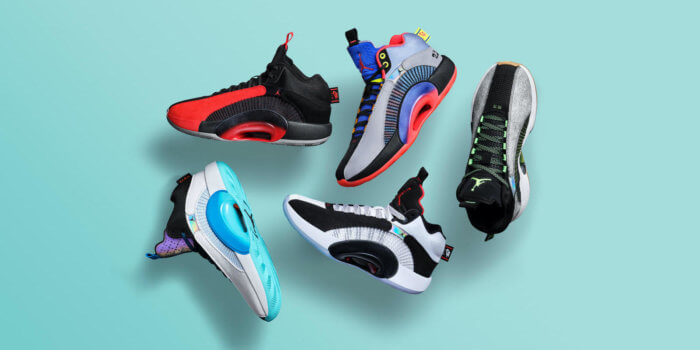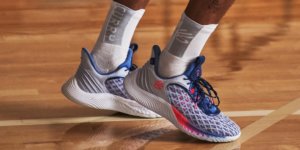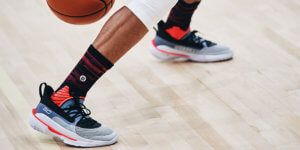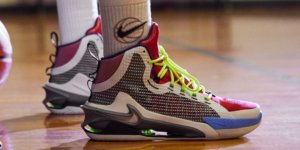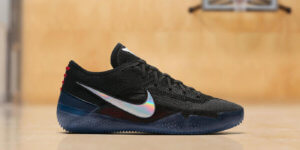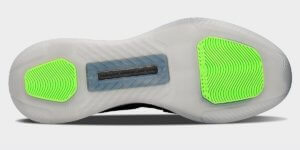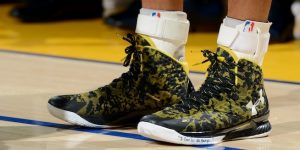The Air Jordan 1 is the most iconic basketball shoe of all time and started a signature line that is still going strong today - more than 35 years later! Today, Jordan Brand is generating over $3 billion in revenue per year, accounting for 8% of Nike's overall sales.
While a large part of this revenue comes from re-releasing older Air Jordan models like the coveted Air Jordan 11 "Concords", Jordan Brand is still releasing some of the best performance basketball shoes on the market.
In this article, we are going to focus on the currently available Jordans that perform the best on the hardwood.
Best Jordans Shoes to Play Basketball in:
-
8.2
rating based on
8 expert reviews
-
The Jordan Luka 3 is a bulky-looking shoe that plays more balanced than it looks thanks to its tacky traction.
-
The Luka 3 is best for shifty, balanced players who mainly play on clean courts.
-
8.1
rating based on
9 expert reviews
-
The Air Jordan 39 is a great performance shoe with many positive features and a few negative ones.
-
This is the perfect shoe for players who love explosive cushioning setups.
-
8.0
rating based on
5 expert reviews
-
The Jordan Zion 4 makes slight improvements but the fit is still tricky.
-
The Zion 4 is best for players with narrow feet who want extra support and comfortable cushioning.
-
8.0
rating based on
8 expert reviews
-
The Jordan Zion 3 is a switch-up in the Zion line. It has solid traction and impressive reinforced materials.
-
The Zion 3 is best for heavier players with fast-paced play styles.
-
7.7
rating based on
8 expert reviews
-
The Jordan Tatum 3 makes minor improvements to the cushioning and is the best shoe in the lineup so far.
-
The Tatum 3 is best for players who move a lot on their forefoot.
-
7.7
rating based on
9 expert reviews
-
The Jordan Tatum 2 is a decent performance shoe, mainly held back by the traction.
-
The Tatum 2 is best for players who prefer balanced setups with Air Strobel.
-
7.4
rating based on
5 expert reviews
-
The Jordan One Take 5 has excellent torsional support and stability, but the shoe is stiff.
-
The Jordan One Take 5 is best for players who play around the hoop.
Best Jordans for Basketball
Performance Rating:
The Jordan Luka 3 is a bulky-looking shoe that plays more balanced than it looks thanks to its tacky traction.
Pros:
Effective traction on clean courts
Cons:
Retains heat with a lack of breathability
What do the experts think?
Luka Doncic's third signature shoe is a step in the right direction in on-court performance.
The traction pattern performs very well, especially on clean courts. However, most reviewers experienced the outsole picking up dust quickly, which hampers performance.
Cushlon 3.0 is the foam of choice in the midsole. It feels balanced, responsive, and low to the ground.
The materials are soft and comfortable. They provide support and containment, but reviewers mention the upper isn't breathable.
Support and lockdown are not an issue. The upper construction and the iso plate provide plenty of containment. The shoe's base also helps with stability.
The Jordan Luka 3 improves on the previous two Luka signatures with reliable traction and balanced cushioning. Just make sure to wipe the dust off the outsole.
Performance Rating:
The Air Jordan 39 is a great performance shoe with many positive features and a few negative ones.
Pros:
One of the best cushioning setups
Cons:
Lack of outrigger hurts stability
The outsole is a dust magnet
What do the experts think?
The Air Jordan 39 is a polarizing shoe with high highs and low lows when it comes to its performance features.
Reviewers agree the traction performance is excellent on clean courts, and the outsole is a dust magnet. The dust pickup affected some reviewers more negatively than others.
The full-length ZoomX and Zoom Air setup is excellent for comfort and bounce, but it can be excessive and unstable because of the cup sole.
Materials are comfortable and feel supportive. The upper conforms around the feet nicely, but there's no breathability.
The fit is close to perfect. It's slightly snug and accommodating around the forefoot.
Support is an issue. There's no outrigger, and the outsole does not contain the shoe's soft foam. Reviewers complained about a lack of lateral stability.
The Air Jordan 39 has impressive tech features, but the poor execution keeps the shoe from being a unanimous great performer.
Performance Rating:
The Jordan Zion 4 makes slight improvements but the fit is still tricky.
Pros:
Bouncy and comfortable cushioning
Durable and supportive upper materials
Cons:
Cheap, non-breathable upper
What do the experts think?
Zion Williamson's fourth signature shoe is a niche performer providing decent value for the price.
The traction performance is decent, especially on clean courts. However, the outsole picks up dust and can be inconsistent on dirtier floors.
Jordan Brand once again uses a drop-in midsole in the Zion 4. The Cushlon 3.0 is thin but responsive. The main draw of this setup is the full-length Zoom Strobel beneath the drop-in. It feels bouncy and plush.
Materials are not premium but are supportive. Containment is not an issue with this upper setup.
Most reviewers mention some form of discomfort with the narrow toe area. The fit requires a break-in period to become more comfortable. There are also complaints of heel slippage.
Outside of the heel slippage, the rest of the shoe has impressive support thanks to the thick upper.
If the shoe fits you well, the Jordan Zion 4 is a solid performer for the price, thanks to its cushioning, which is a standout feature.
Performance Rating:
The Jordan Zion 3 is a switch-up in the Zion line. It has solid traction and impressive reinforced materials.
Pros:
The midfoot flange provides extra stability
Cons:
Dust pickup on the traction
What do the experts think?
Zion Williamson is on his third signature shoe with Jordan Brand, and this iteration takes a different approach to the support.
The traction performs well, especially indoors, but some reviewers mention that dust pickup is a flaw.
Jordan Brand uses a Formula 23 drop-in midsole. It feels soft and comfortable, but the tech specs could be better in a more traditional setup.
The upper gets reinforced with extra rubber and a TPU layer, providing additional support.
The midfoot and medial side flanges increase the shoe's stability. The padding around the heel also increases lockdown.
Reviewers agree that the fit is narrow and not meant for players with wide feet.
Overall, the Jordan Zion 3 plays well for stockier players who can take advantage of the stability features at a higher pace.
Performance Rating:
The Jordan Tatum 3 makes minor improvements to the cushioning and is the best shoe in the lineup so far.
Pros:
Cushlon 3.0 feels soft and comfortable
Lightweight and flexible upper materials
Cons:
Lacks a lateral outrigger
What do the experts think?
Jayson Tatum's third signature shoe is his best yet, but not by much.
The traction performance is inconsistent. Sometimes, the grip performs well, but other times, reviewers mention slipping.
Jordan Brand uses Cushlon 3.0 as the midsole foam. It feels soft and comfortable.
The materials are flexible, lightweight and breathable. The upper conforms to your feet well, but the materials loosen with time.
Support and lockdown are not the best. The upper lacks containment, and heel stability could be improved. There's also no outrigger.
The Jordan Tatum 3 improves, but not enough to be a good performer. The traction is too inconsistent.
Performance Rating:
The Jordan Tatum 2 is a decent performance shoe, mainly held back by the traction.
Pros:
Lateral containment is excellent
Air Strobel is comfortable
What do the experts think?
The Jordan Tatum 2 would be a better shoe if it weren't for the traction. The outsole collects dust quickly, which hinders performance.
The full-length Air Strobel is a step up in cushioning. It feels balanced but not bouncy.
Jordan Brand uses lower-quality materials, but the durability is solid. The shoe is lightweight and comfortable. Heat retention could be better.
The upper construction provides extra stability. The lateral containment is excellent, too.
Overall, the Jordan Tatum 2 improves on the construction and stability of the previous model, but the unreliable traction on dust is too much of a drawback.
Performance Rating:
The Jordan One Take 5 has excellent torsional support and stability, but the shoe is stiff.
Cons:
A stiff shank plate limits mobility
What do the experts think?
The Jordan One Take 5 feels more like a skateboarding shoe.
The traction is decent, particularly on clean courts. Dust accumulates quickly, though.
There's a forefoot Zoom unit, but the Phylon makes the cushioning feel stiff. However, the responsiveness is decent.
The materials are decent. There's plenty of structure and reinforcement.
All reviewers mention the shoe is stiff due to the midfoot shank plant. The torsional support and stability are impressive if that's what you're looking for, though.
Impressive stability and torsional support make the Jordan One Take 5 an average performer.
Founder of thehoopsgeek.com. A passionate basketball enthusiast and coding geek, Andy combines a love for sports with technology.


